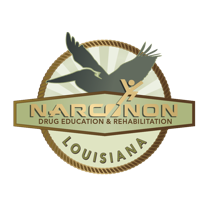Crack Addiction: A Timeline
Crack Addiction: A Timeline
 Crack cocaine addiction can be found all over the world, from Canada to Africa, from London to Atlanta. Although in America the “crack epidemic” is technically over you can still find crack in every major city in the US.
Crack cocaine addiction can be found all over the world, from Canada to Africa, from London to Atlanta. Although in America the “crack epidemic” is technically over you can still find crack in every major city in the US.
The Source of Crack
Crack is derived from coca leaves as is traditional cocaine. Coca leaves were initially found in the Andes Mountains and chewed by the natives in this area. Coca leaves may have been essential to human survival in this area as they contained many vitamins and nutrients that many other plants of the region lacked. When the Spanish invaded this area they tried to outlaw the use of coca leaves claiming they were sent from the devil. However they noticed that when the natives did not chew their sacred coca leaves they were less able to provide as much physical labor as well as not being as friendly or easy going. Chewing coca leaves provided extra energy, reduced hunger as well as giving the chewer an overall sense of well-being and good will. One of the reason the coca leaves may have been such an effective stamina supporter, aside from the active stimulant in it, was the fact that coca also serves as a bronchial dilator increasing the lung function in a high altitude area where the air was not as oxygen rich as it is in lower altitudes. This practice of just chewing the raw leaves went on for thousands of years and continues until this day.
The History of Cocaine
In 1855 a German chemist by the name Friedrich Gaedcke isolated the active alkaloid found in the coca plant. He called it Erythroxyline. A few years later a young student named Albert Niemann, who was going for his PHD at Gottington University, perfected the process of extraction of the alkaloid. He called it the name that we still use today- Cocaine. The first part of the word coca referring to the plant from which the substance is extracted, ine referring to the alkaloid suffix.
After the medical profession discovered cocaine, it began appearing in all different types of tinctures and medicines. Vin Mariani came out with the infamous coca wine and a gentleman from Atlanta Georgia named John Sythe Pemberton followed suite. However, in 1885 the sale of alcohol was banned in Atlanta. Not willing to give up his enterprise, Pemberton took out the alcohol, added cola nut and viola we have Coca-Cola. After a while Pemberton go frustrated with the lack of revenue that the company was pulling in so he sold the entire enterprise for a whopping $2300 dollars to Asa Griggs Candler. Funny, not many people have heard the name Pemberton, but if you go to Atlanta there’s a park named after Candler.
Sigmund Freud, the father of psychiatry, was another advocate of cocaine, at least for a while, until it got the best of him. He as well as many other doctors claimed it was the cure all for all sorts of ailments, including depression, toothaches, sexual dysfunction, as well as treatment for morphine addicts as well as alcoholics. It was found however, after a time, that many of the morphine addicts started to just simply add cocaine to their morphine. This lead to what was sometimes a very deadly drug cocktail. A good friend of Freud by the name of Koller discovered that cocaine worked very well as an eye anesthetic during eye surgery. It would numb the eye, while constricting blood vessels, leaving the patient awake and able to move their eye as per doctor instructions during surgery without being in unbearable amounts of pain. To this day cocaine is still used as an anesthetic in some situations.
But as can happen with any good love affair, the public affection for cocaine soon turned sour. In the early 1900’s public officials became increasingly alarmed at the social problems people, who had been long term cocaine users, developed. They exhibited erratic, addictive behavior, and where often times public nuisances. The Harrison Narcotic Act was passed in 1914. It severely limited the legal uses of cocaine. For the most part it curtailed extensive cocaine use for the early part of the nineteenth century. In the 1930’s the discovery of amphetamine almost completely eradicated the use of cocaine.
Cocaine Comeback
However in the 1960’s cocaine began to make a comeback. Alarmed, public officials announced that cocaine was now a controlled substance and to have it in one’s possession was considered a criminal offense. This did not stop the public from partaking however, and cocaine use continued to escalate. Freebasing cocaine started gaining popularity. Freebasing is the process in chemistry where a substance is taken from a salt form and put into a rock form. In most cases around this time people were using ether and fire to freebase the cocaine into rock form. This was very dangerous and caused many deaths and injuries. A few years later drug chemists found a new way to turn salt cocaine into a smokeable rock form using water and baking soda.
Narconon cocaine abuse treatment is an effective alternative to twelve step treatment.
From Coke to Crack
Thus crack was born. Crack was about 90 percent pure and much more addictive than cocaine in salt form. In the late 1970’s large volumes of cocaine where being smuggled across U.S. borders and because of this surplus in product drug dealers saw a loss in revenue. Crack was the perfect solution to this problem for them. Because it was much more addictive than regular cocaine, the rush was much more intense and because it was often 90 percent pure, and the high wore off much more quickly people would go through larger amounts of crack in less amounts of time than they would with powder cocaine. Also crack rocks where often broken down into five and ten dollar amounts so it was easier to sell to more people.
Crack Epidemic
The largest influx of crack cocaine usage in America lasted from 1984 to 1990. It was during this time crack usage spread nationally to all major cities in the U.S. The number of people who admitted to using either cocaine or crack cocaine rose from 4.2 million to 5.8 million during this peak. This was also when the media created national terror over the infamous crack baby. It was said that children born to crack addicted mothers would grow up to be Mongoloids who would be the scourge of our society. Experts agree that this so called crack baby epidemic was widely blown out of proportion and that if given adequate care many of these children have grown up to be average citizens.
Since this time crack usage has been on the decline. Some experts say that this was due to a decreased birth rate and others point to the severe sentencing guidelines that were enforced at the height of the epidemic. Regardless of the reasons, crack addiction has been in a steady decline since 1994. You can still find crack in all major cities and there are still quite a few individuals who are addicted to this substance. And as long as lives are being lost, it is still a problem.
